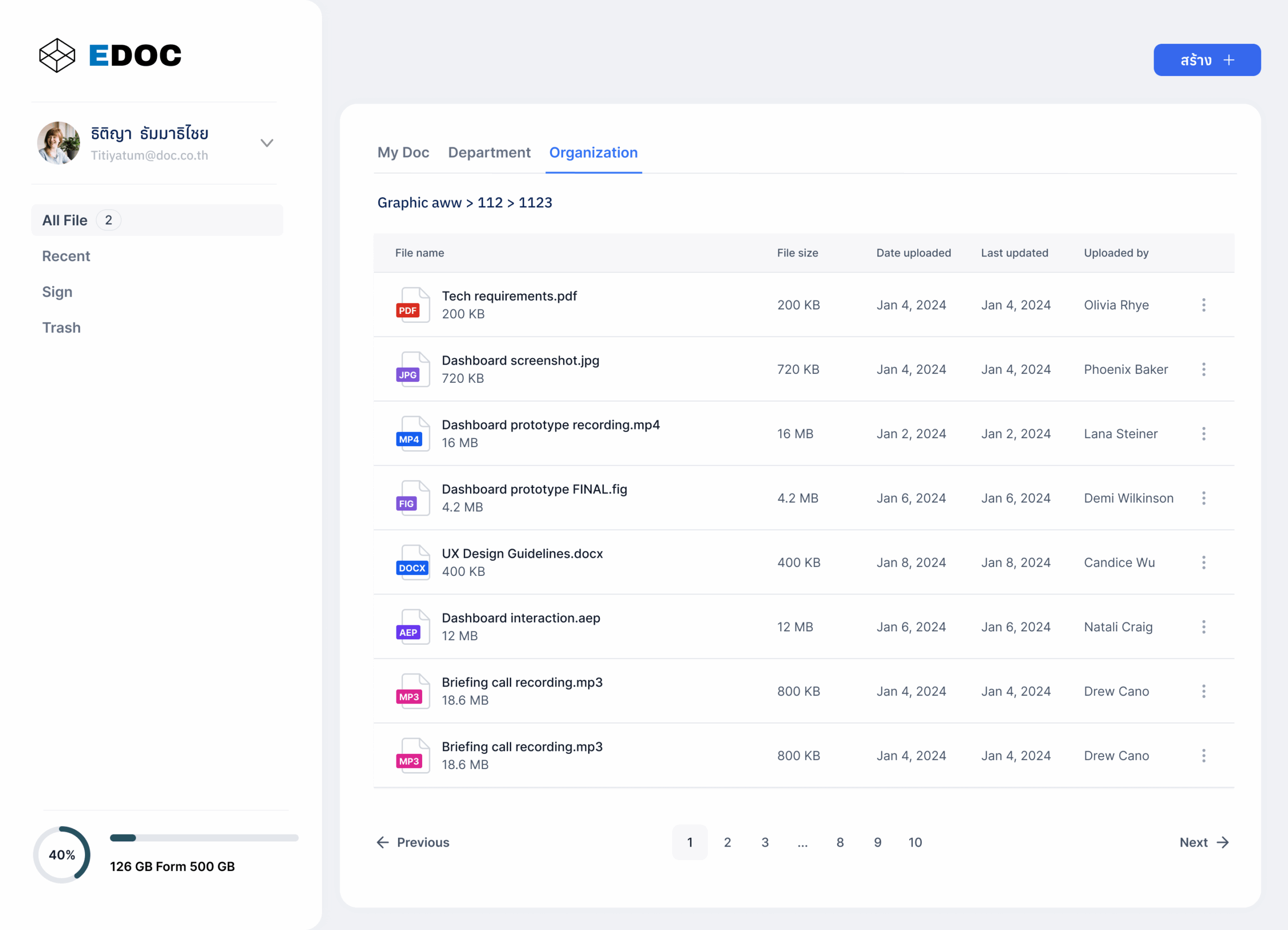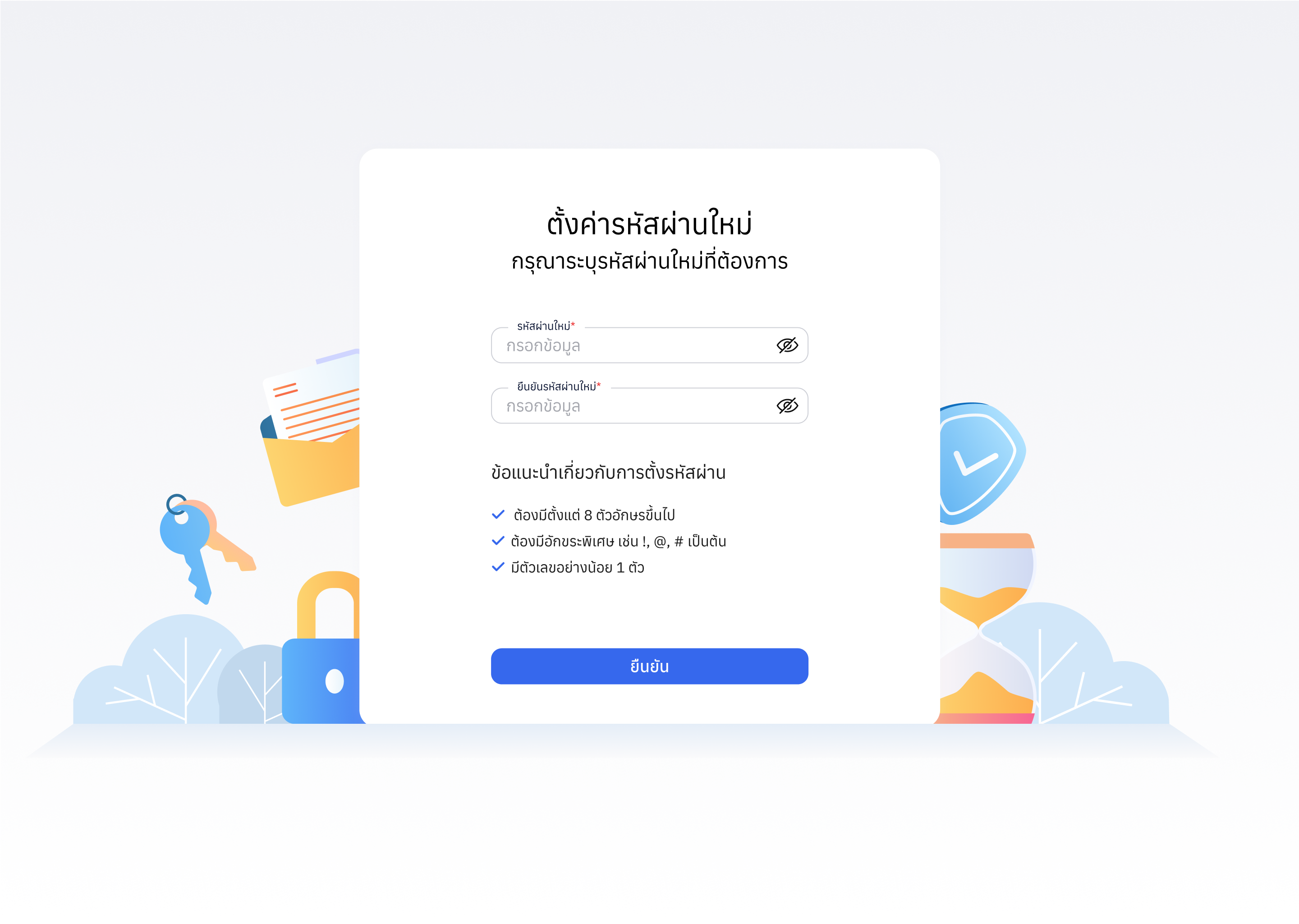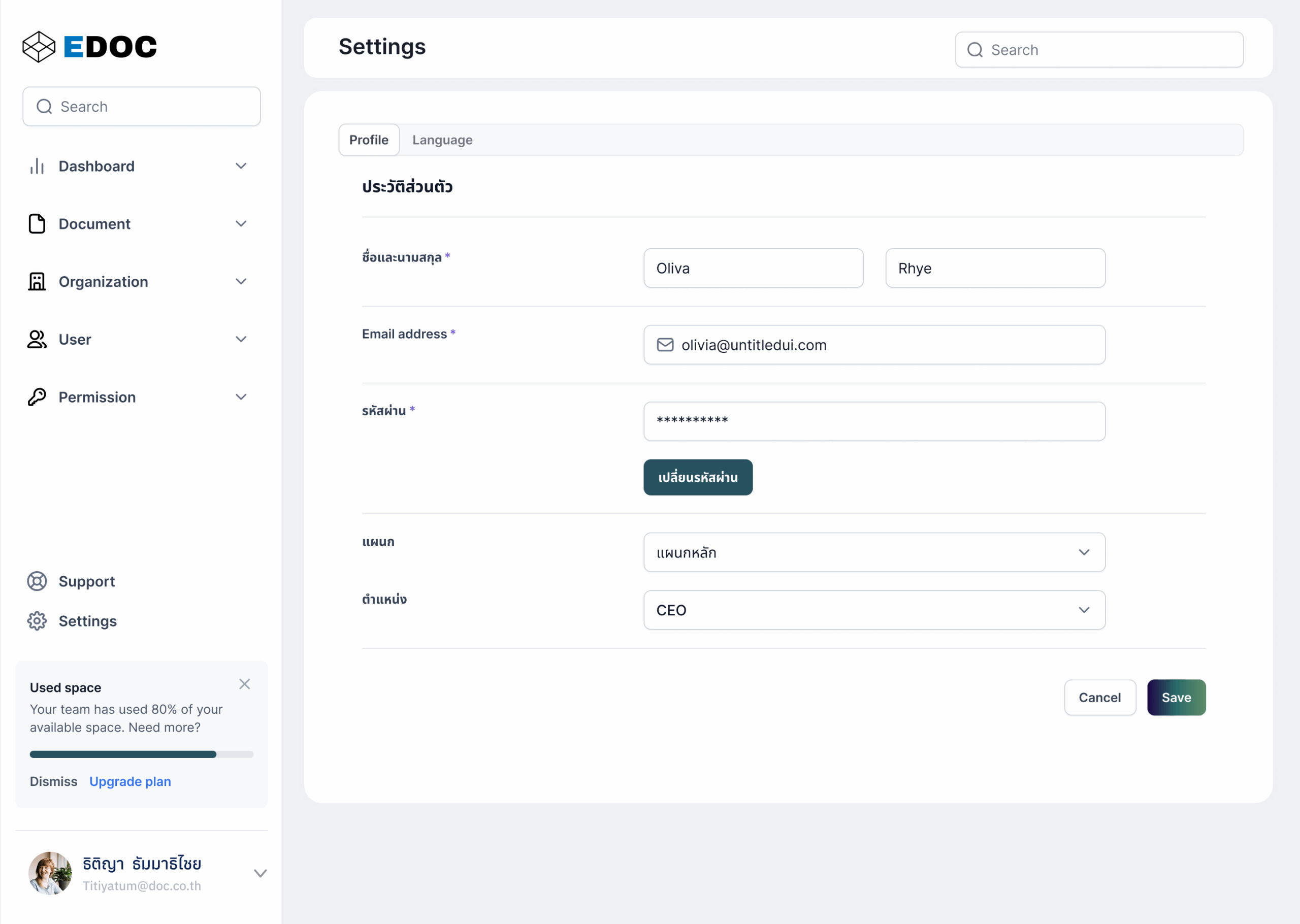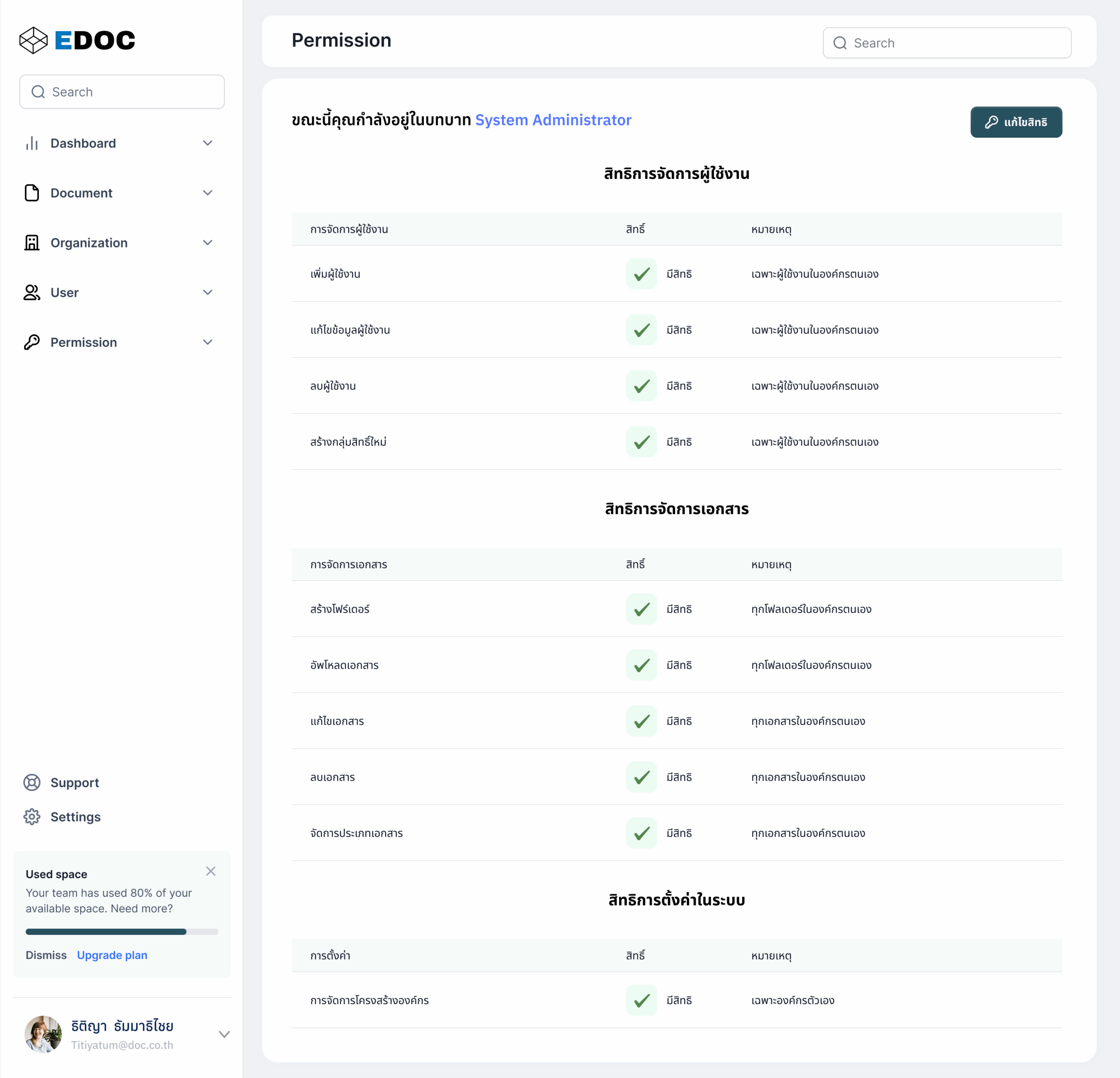Document System (2025)









Document System (2025) — UX/UI Design Plan
Main Objectives
- Enable users to efficiently create, manage, search, and share documents.
- Minimize clicks and cognitive load to improve ease of use.
- Support collaboration and team-based workflows.
- Handle large volumes of documents with real-time search and filtering.
- Provide role-based access control and permission management.
UX Design Principles
User-Centered Navigation
- Dashboard-first approach with clear access to:
- Recent Documents
- Favorites
- Shared with Me
- Folders & Tags
- Breadcrumbs for easy navigation within folder structures.
- Global Search bar always visible and easily accessible.
Smart Search & Filtering
- Real-time search with autosuggest.
- Advanced filters (date, document type, tags, owner).
- Saved filters & custom views for power users.
Document Lifecycle Management
- Clear CTAs: Create, Upload, Edit, Share, Archive, Delete.
- Versioning support with easy rollback and compare views.
- Audit trails and document activity logs.
Collaboration & Sharing
- Share with roles or individuals with customizable permissions (View / Comment / Edit).
- Real-time commenting and annotations.
- Notifications for shares, edits, and mentions.
Accessibility & Responsiveness
- Full accessibility support (ARIA roles, keyboard shortcuts, screen reader ready).
- Responsive design (Desktop, Tablet, Mobile).
Personalization
- User profiles and settings.
- Dark mode / light mode toggle.
- Customizable dashboard and sidebar.
Advanced Features (Optional, future-proof ideas)
- AI-powered suggestions (related documents, tagging, classification).
- Auto-categorization and smart folders.
- Integrations (Google Drive, OneDrive, Slack).
- Offline mode with auto-sync.